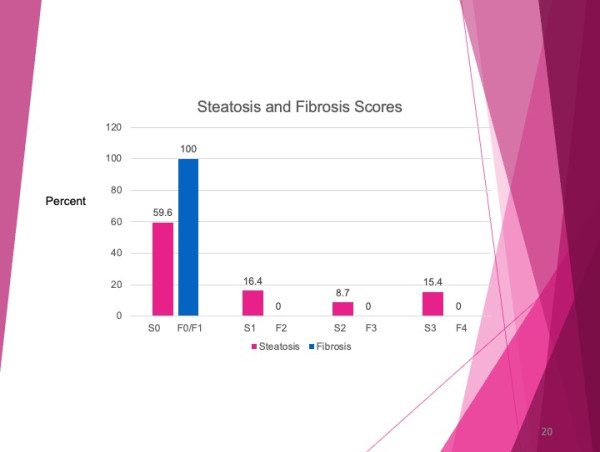In a ground-breaking event at the Joint CDDW-CLM Conference, held in Toronto, in March 2024, the spotlight turned not only towards the latest advancements in liver health but also shone on the liver health of its attendees. The conference, highlighting new data and liver updates by international experts, saw a unique initiative that underscored the often-overlooked aspect of healthcare: the well-being of the healthcare providers themselves, as well as liver health provider industry partners.
The Initiative:
The Fatty Liver Alliance, along with the Canadian Association for the Study of Liver (CASL) and the Canadian NASH Network (CanNASH), embarked on a mission to highlight the significance of early and non-invasive, liver health assessments, by hosting a dedicated location for private liver health assessments, known as the ‘Fibroscan® Lounge’. “Early detection of liver fibrosis is believed to promote lifestyle changes.”(2) Through the generous support of sponsors Liver Scan Direct (https://www.liverscan.ca/), who performed all the Fibroscan assessments, and Sentrex Health Solutions (https://sentrex.com/), the event facilitated 104 Fibroscan assessments for its attendees, bringing to light insightful findings about liver health among a demographic that is at the forefront of medical care and research.
The Findings:
The assessments revealed a spectrum of liver health statuses among the attendees, that emphasize the need for early detection and management of liver diseases. The participants, aged between 22 and 68 years, with an average age of 35, underwent Fibroscan assessments to measure steatosis (CAP scores) and liver elasticity (kPa scores that reflect fibrosis).
• Steatosis (CAP Score): The average CAP score stood at 235.5 dB/m, with a range from 126 dB/m (considered normal) to a high of 383 dB/m (indicative of severe steatosis). This variability highlighted the differing levels of liver fat accumulation among the conference participants, with 15.4% having very high levels of liver fat (above 290 dB/m). For reference, here are the CAP scores and associated Steatosis stage ranges.(3)
• CAP Score of 0 to 237 dB/m = S0 and 0% to 10% fat
• CAP Score of 238 to 260 dB/m = S1 and 11% to 33% fat
• CAP Score of 261 to 290 dB/m = S2 and 34% to 66% fat
• CAP Score of 291 to 400 dB/m = S3 and > 67% fat
• Fibrosis (kPa Score): On the fibrosis front, the average liver stiffness was recorded at 4.93 kPa, with the range lying between 2.9 kPa and 7.2 kPa. The normal range for a FibroScan is between 2 to 7 kPa. The average normal result is 5.3 kPa.(4) For reference, here are the kPa ranges and associated Fibrosis stages.(3)
• 2 to 7 kPa = F0 to F1 No liver scarring or mild liver scarring.
• 7.5 kPa to 10 = F2 Moderate liver scarring.
• 10 kPa to 14 = F3 Severe liver scarring.
• >14 kPa = F4 Advanced liver scarring (cirrhosis).
Liver Health Assessment Results:
• These results indicate that while there was sizable presence of liver fat accumulation, significant fibrosis was not detected among the attendees. In a recent analysis(5) of over 5,000 subjects from 5 population-based cohorts who underwent Fibroscan screening, the prevalence of advanced fibrosis, indicated by a liver stiffness >8 kPa, was 11%, substantially higher than that observed in the healthcare providers described in this analysis. This contrasts with the observations made in our cohort of healthcare providers, where significant fibrosis was notably absent (0%). This difference may suggest that the healthcare providers in our analysis are more attuned to the importance of liver health, possibly due to their professional background, and may adhere more closely to healthy lifestyle practices that mitigate the risk of developing such severe liver conditions.
• The average duration of the scans was “less than 90 seconds”, attesting to the simplicity of this non-invasive screening approach.
The Implications:
These findings not only shine a light on the silent nature of liver diseases but also stress the importance of regular health assessments. Michael Betel, President and Founder of the Fatty Liver Alliance, commented, "The early assessment of liver diseases, such as MASLD and MASH, is crucial. We're heartened by the impact of this year's liver health assessments and plan to expand this initiative next year, allowing even more attendees to benefit from early detection."
Looking Ahead:
This initiative serves as a powerful reminder of the necessity for healthcare professionals to lead by example in the advocacy for health and well-being, not just for their patients but for themselves as well. As plans are underway to repeat and enlarge the scope of this event in the upcoming year, the message is clear: early detection and regular health assessments are key to combating liver diseases effectively.
The Joint CDDW-CLM Conference has set a precedent, underscoring the collective responsibility of the medical community to embrace preventive measures. By turning the lens inward, healthcare professionals can champion the cause of liver health with renewed vigor and personal insight, making early liver health assessments an integral part of the narrative in the fight against liver diseases.
References:
1. MASLD - Sounding the alarm on a silent epidemic (NRGH, 2020): https://www.nature.com/articles/s41575-020-0315-7 DOI: https://doi.org/10.1038/s41575-020-0315-7
2. Screening for Fibrosis Promotes Lifestyle Changes: A Prospective Cohort Study in 4796 Individuals (CGH, 2023) https://www.cghjournal.org/article/S1542-3565(23)01053-4/fulltext DOI: https://doi.org/10.1016/j.cgh.2023.12.018
3. Estimation of Liver Fat by FibroScan in Patients With Nonalcoholic Fatty Liver Disease. Cureus. 2021 Jul 15;13(7):e16414. https://doi.org/10.7759/cureus.16414. PMID: 34422459; PMCID: PMC8367388.
4. The University Health Network: FibroScan® and Liver Disease: Patient Education https://www.uhn.ca/PatientsFamilies/Health_information/Health_Topics/Documents/FibroScan_Liver_Disease.pdf
5. Low Accuracy of FIB-4 and NAFLD Fibrosis Scores for Screening for Liver Fibrosis in the Population: Clin Gastroenterol Hepatol. 2022 Nov;20(11):2567-2576.e6. Epub 2021 Dec 29. PMID: 34971806.https://pubmed.ncbi.nlm.nih.gov/34971806/ https://doi.org/10.1016/j.cgh.2021.12.034.
Fatty Liver Alliance is a not-for-profit charity (79690 4704 RR0001) and we greatly appreciate any donations. https://www.fattyliver.ca/donations
Michael Betel
Fatty Liver Alliance
+1 716-603-4351
email us here
Visit us on social media:
Facebook
Twitter
LinkedIn
YouTube
![]()




